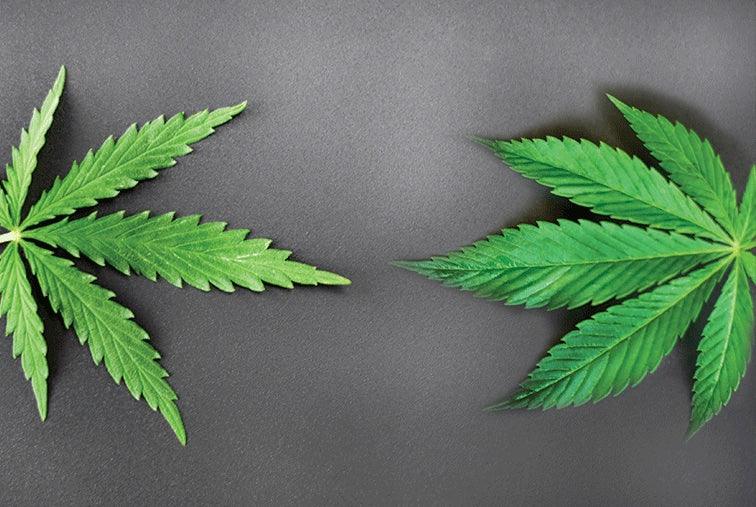Introduction
In the world of cannabis, there's an age-old classification system that has guided enthusiasts and connoisseurs for decades: Sativa, Indica, and Hybrid. These labels have been used to describe the effects and characteristics of different cannabis strains. But as the industry evolves and scientific research advances, the question arises: Do these strain labels still matter today, or are they merely relics of the past? Let's explore this topic and shed some light on the matter.
Sativa, Indica, and Hybrid: A Brief Recap
The terms sativa and indica originated in the 18th century when European botanists first encountered cannabis plants during their explorations. Sativa was initially used to describe plants originating from equatorial regions, while indica referred to those found in India and surrounding areas.
- Sativa strains: Known for their energizing and uplifting effects, Sativa is often associated with creative inspiration and a heady high.
- Indica strains, on the other hand, are often linked to relaxing and sedating properties, believed to have a more calming and body-centric impact. Indica is the go-to choice for winding down and chilling out.
- Hybrid strains: These are the love children of Sativa and Indica, combining the best of both worlds and offering a spectrum of effects.
These classifications were primarily based on physical characteristics, such as plant height, leaf shape, and geographic location.
The Blurred Lines of Modern Cannabis:
With the advent of sophisticated breeding techniques, the lines between Sativa and Indica strains have become increasingly blurred.
A lot more hybrid strains are being created. Hybridization has led to an abundance of new strains with diverse characteristics.
Strains are no longer strictly classified based on plant morphology or geographical origin; instead, they are designed to cater to desired effects and cannabinoid/terpene profiles.
The Science Behind It All
Recent scientific studies have challenged the traditional Sativa/Indica dichotomy, revealing that it's more complex than previously thought.
Researchers have found that the chemical composition of a strain (cannabinoids and terpenes) plays a significant role in its effects, rather than just its genetic lineage.
A cannabinoid/terpene profile refers to the specific combination and concentration of cannabinoids and terpenes found in a particular cannabis strain or product.
Cannabinoids are chemical compounds that interact with the endocannabinoid system in the human body, producing various effects. Some well-known cannabinoids include tetrahydrocannabinol (THC) and cannabidiol (CBD).
Terpenes are aromatic compounds found in various plants, including cannabis. They contribute to the distinct aroma and flavor of different cannabis strains, but they also have potential therapeutic properties. Terpenes can interact synergistically with cannabinoids, creating what is known as the entourage effect, which refers to the idea that the combined presence of cannabinoids and terpenes can enhance or modulate their individual effects.
Individual Biochemistry Matters
Each individual's biochemistry (endocannabinoid system) is unique, leading to variations in how they respond to different strains.
Factors like tolerance, metabolism, and personal preferences can greatly influence the effects experienced.
What may be an energizing Sativa strain for one person might leave another feeling anxious or restless.
The Importance of Accurate Labeling
Although the Sativa/Indica distinction may not be the sole factor in predicting effects, strain labels can still serve as a helpful starting point for consumers.
Proper labeling allows consumers to make informed decisions, considering factors beyond just the strain's name, such as cannabinoid and terpene profiles.
Regulations and testing standards are being implemented in the cannabis industry to ensure accurate labeling and transparency.
There’s still a lot of research to be done!
Conclusion
In the ever-evolving cannabis world, the Sativa, Indica, and Hybrid labels may not hold the same weight as before. The effects of a strain are influenced by complex factors beyond genetic lineage, including cannabinoid and terpene profiles, as well as individual biochemistry. Nevertheless, strain labels can still provide a general indication of what to expect, acting as a springboard for exploration. To find the ideal strain, be open to experimentation, and pay attention to the specific chemical makeup of the product. So, whether you're Team Sativa, Team Indica, or somewhere in between, embrace the journey and enjoy cannabis responsibly!
* Please note that we do a ton of research to get you the most accurate and reliable information; however, we are not medical professionals. While these sources provide valuable information, the blog post is intended for educational purposes and may also include a touch of humor and wit to engage the reader. Sources: Leafly, Healthline, Herb.co, & High Times.



Leave a comment